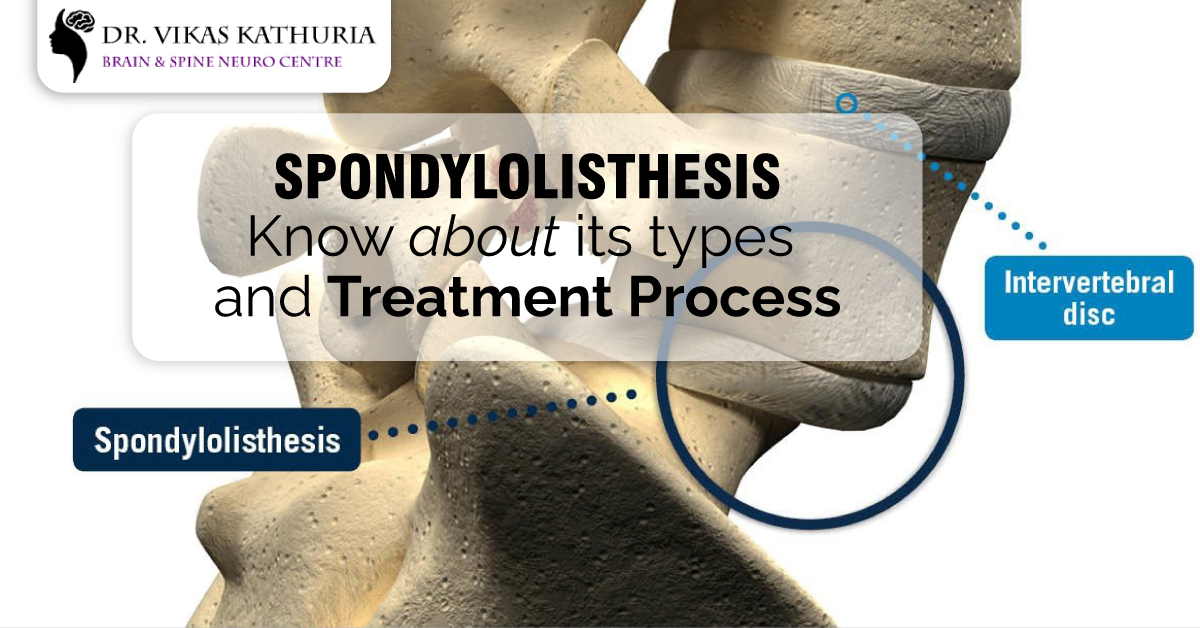Spondylolisthesis – Know About Its Types And Treatment Process

When a spinal disc slips out of place, a condition known as spondylolisthesis can develop. In most cases, this takes place at the base of the spine. In this area, the vertebrae slide forward in the direction of the bine that is present beneath it. More than ten million people in India are affected by this ailment. It is a prevalent condition. It is treatable. However, the treatment process takes a very long period. And if it is chronic, it may potentially persist throughout a person’s entire life.
Treatment for this illness is now readily available and simple to obtain. However, you risk making a mistake if you do not have enough information. In Gurgaon, patients with spondylolisthesis have access to various therapeutic options. However, before undergoing the treatment, you should better understand the type of spondylolisthesis you are dealing with.
There are approximately six primary categories of spondylolisthesis, each of which can be further subcategorized based on the severity of the condition.
Spondylolisthesis Can Take Several Forms
- Spondylolisthesis of the Type I kind is caused by a genetic predisposition to the illness. During their normal development, a kid may unexpectedly come to suffer from this ailment.
- Spondylolisthesis of the Type II kind is the most typical form of the condition. In this particular instance, there is an issue with the part of the vertebra known as the pars interarticularis. There are several subtypes of type II, including:
- Microfractures of the type IIA variety are brought on by overuse and hyperextension.
- Type IIB microfractures are those that do not break fully through the bone. They heal with an additional bone in the correct position. In addition, this additional bone results in the strain as well as misalignment.
- A complete fracture of the bone induced by a traumatic event such as an accident or injury sustained in sports. Spondylolisthesis can develop from fractures of type IIC only if the vertebra slides forward due to the fractures.
- Type III is a condition that arises due to natural aging and general wear and tears on a person’s body.
- A type IV variety fracture can occur in any part of a vertebra except the pars interarticularis region.
- Tumors distinguish type V on the vertebrae, which exerts pressure on the bones, resulting in a state of weakness.
- Spondylolisthesis of the Type VI variety is rather infrequent and is brought on by the spine’s weakening resulting from surgical procedures.
Treatment is essential for all of the categories that have been discussed thus far. The treatment for spondylolisthesis should be selected based on the specific form of spondylolisthesis and the degree of the condition. However, the treatment itself is a complex process that requires the expertise of a trained medical professional.
Treatments
The treatment you receive is determined by the severity of the slippage, as well as your symptoms, age, and general health. Your healthcare professional will talk to you about the many treatment options available. You may need medical treatment, physical therapy, or perhaps Spinal Disc Surgery in Gurgaon.
Treatments that do not involve surgery include:
- Get some shut-eye and vacation from all the intense activities and sports you’ve been doing.
- Medication: Nonsteroidal anti-inflammatory drugs (NSAIDs) that are available without a prescription, such as ibuprofen (MotrinĀ®) or naproxen (AleveĀ®), may provide some degree of pain relief. If these treatments are ineffective, your healthcare professional may recommend a different course of treatment.
- Steroid drugs are injected directly into the afflicted area through injections.
- Physical therapy: A physical therapist can show you specific exercises to perform to build strength in your back and abdomen (belly). After a few weeks of consistent use, physical activity can frequently alleviate discomfort.
- Stabilization of the spine can be achieved with the use of a brace. For the fractures to heal correctly, the brace restricts movement. Adults do not need to wear orthodontic appliances.
Treatment Via Operation
Your healthcare professional will first explore nonsurgical treatment alternatives with you, such as getting enough rest and participating in physical therapy. These medicines frequently alleviate the symptoms. Your cervical spondylosis specialist doctor in Gurgaon may suggest surgery if any of the following apply to you:
- Suffer from a severe form of spondylolisthesis.
- Feel a great amount of discomfort.
- I have attempted nonsurgical therapy, but my symptoms have not improved.
Decompression of the spine, with or without fusion, is the conventional surgical treatment for back discomfort brought on by spondylolisthesis. In cases of isthmic spondylolisthesis, decompression treatment on its own nearly never suffices.
According to certain studies, fusion followed by decompression may result in a better outcome than decompression on its own. During a decompression surgery, your surgeon will remove bone and discs from the spine to relieve pressure on the spinal cord. This surgery gives the nerves space inside the spinal canal, resulting in pain relief.
During a fusion procedure, your surgeon will “fuse” (join) the two problematic vertebrae in your spine. They eventually fuse to form a single bone, which stops any movement that may have occurred between the two vertebrae. As a potential side effect of the surgery, you might find that your spinal flexibility is reduced.
